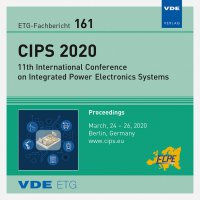Microstructure and Shear Force Correlation After Reliability Testing of Bond Contacts Using Alternative Al Heavy Wire Materials
Konferenz: CIPS 2020 - 11th International Conference on Integrated Power Electronics Systems
24.03.2020 - 26.03.2020 in Berlin, Deutschland
Tagungsband: CIPS 2020
Seiten: 7Sprache: EnglischTyp: PDF
Autoren:
Klengel, Robert; Schischka, Jan; Stephan, Tino; Klengel, Sandy (Fraunhofer Institute for Microstructure of Materials and Systems IMWS, Walter-Huelse-Straße 1, 06120 Halle, Germany)
Groth, Anne (Technische Universität Berlin, Research Center for Microperipheric Technologies, Straße des 17. Juni 135, 10623 Berlin, Germany)
Hempel, Martin; Schneider-Ramelow, Martin (Technische Universität Berlin, Research Center for Microperipheric Technologies, Straße des 17. Juni 135, 10623 Berlin, Germany & Fraunhofer Institute for Reliability and Microintegration IZM, Gustav-Meyer-Allee 25, 13355 Berlin, Germany)
Inhalt:
Thick Al wire bonding is one of the basic technologies for electrical contacting in power electronics. Novel Al wire materials promise a significant increase in reliability regarding to thermal and thermo-mechanical aging mechanisms such as grain growth and crack propagation. A different aging behavior have been found both in active power cycling (APC) test and passive heat storage tests. The novel high strength materials trigger another crack propagation kinetics during APC. This calls for a careful choice of test parameters in APC test involving these bond wires. The novel wire materials are promising candidates for a significant life time increase of power electronic modules. The crack growth during APC shows to be no more located in the wire material, but in the interface or even the top side metallization of the chip.


